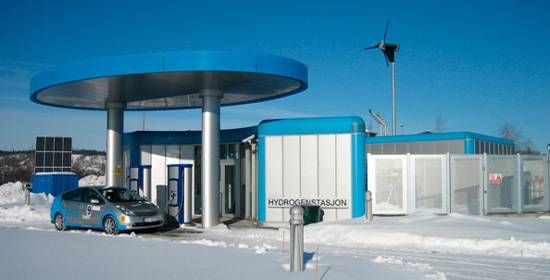
|
News and Events
NEXPEL participants visiting the Statoil Hydrogen filling station during the kick-off meeting in Porsgrunn, Norway. In February, the NEXPEL (Next generation PEM electrolyser for sustainable hydrogen production) project completed a successful kick-off meeting in Porsgrunn, Norway. The meeting was held at the historical site of “The Admini”, the residence of executive director of Norsk Hydro. Porsgrunn is also the site of one of Norway’s four hydrogen filling stations, where the NEXPEL electrolyser stack will produce hydrogen from renewable energy sources such as wind and solar. Overview of the Statoil hydrogen filling station and energy park. The site planned for testing of the NEXPEL electrolysis stack. The Energy Park with a hydrogen refuelling station at Statoils Research Center in Porsgrunn, Norway is a laboratory for testing and qualifying technologies and components for renewable energy production and energy storage. The Energy Park consists of two 6 kW wind turbines from Proven Energy and two 2.5 kW mono-crystalline silicon solar panels with sun tracking from SolarWorld. A 70 kWh lead-acid battery bank from Suntek has been installed for energy storage means. The Energy Park can be run as a stand-alone system using a 48 V DC grid, or it can deliver excess energy to the mains 230 V AC grid. The latest addition to the Energy Park is a pressurized alkaline electrolyser from Hydrogen Technologies, which has been coupled to the wind turbines and solar panels and can be operated under intermittent power conditions. The produced hydrogen serves fuelling purposes at the hydrogen station supplying the local hydrogen vehicle fleet of 9 Toyota Prius H2-ICE. The hydrogen refuelling station is an integral part of the Norwegian hydrogen highway system, HyNor (www.hynor.no) |
|

